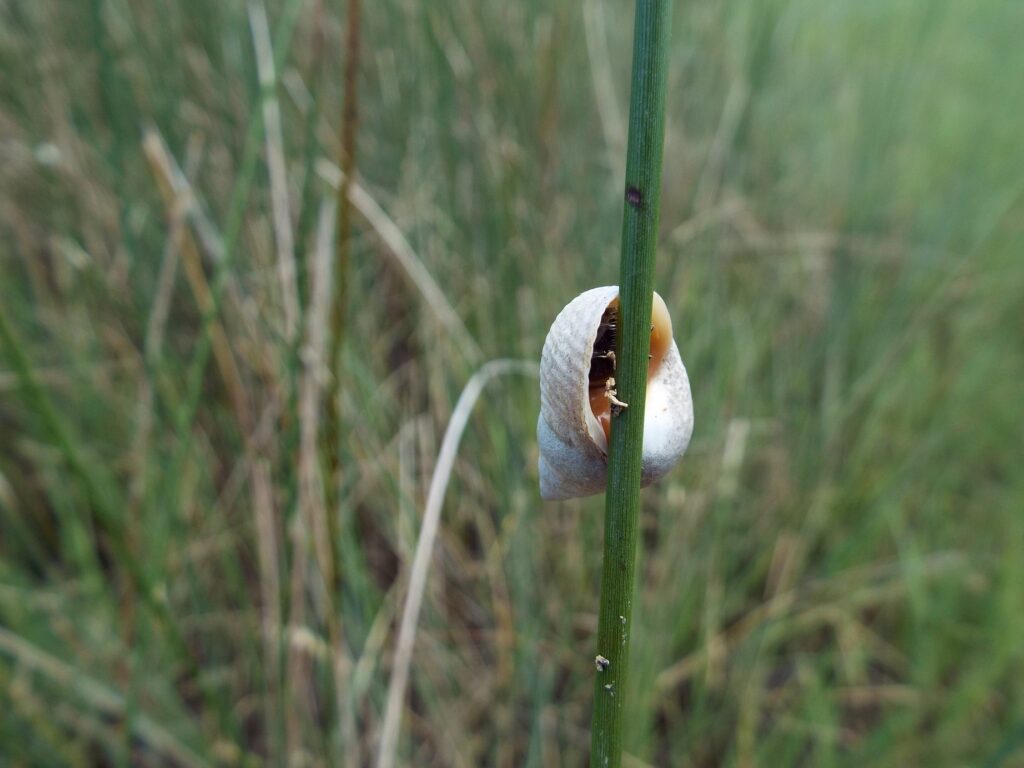

This week for Flora and Fauna Friday, we have a climbing, salty, adhesive snail on display, the Marsh Periwinkle (Littoraria irrorata).
Marsh Periwinkles are a small species of aquatic snail native to the salt marshes of the Southeast. They are less than an inch long, about the size of an acorn. The snails have a dense, conical shell with a coarse texture and the color of unfired potting clay. Their shells are typically coated in a patchy layer of lichens and algae. This shell offers the snail protection while it goes about its daily life. Although stout, this shell can’t protect them from everything. They are a favorite food of Blue Crabs, Sheepshead, Terrapins, and Redfish. To avoid these larger predators, Marsh Periwinkles have developed an interesting strategy. As high tide arrives, exposing the snails to the dangers in the surf, they retreat up the stems of the Cordgrass and Rush to several inches above the water line. Here they glue themselves to the plant stem with extra thick snail slime before retreating into their shells. This use of adhesive allows the snail to close its shell up tightly with its foot, preventing it from drying out in the sweltering South Carolina sun and the continuous dehydrating breeze.
The species is prolific along the coast throughout the low saltmarsh. There can be a dozen periwinkles living in a square foot of marsh. They live amongst the Smooth Cordgrass, feeding on algae and fungi that coat the stems of the plants. Periwinkles, like other gastropods (snails, slugs, and such) have a feeding structure called a radula. A radula is like a tongue covered in teeth and functions like a pliable carpenter’s rasp, projecting from the mouth and scraping away a meal from the surface beneath it. Marsh Periwinkles have a preference for eating fungi rather than algae. So much so, they will actually farm certain species of fungi on the stems of Cordgrass. The snails will use their radula to cut away the skin of a grass stem, exposing the plants vasculature to the water and infection. With luck (for the snail), a fungus will begin to infect the plant and the Periwinkles will return to feed on the fungus in this infected wound. The snails will create these fungal food plots across the stems of the plant and throughout the stand of marsh. If environmental conditions take a turn for the worse, these community-wide fungal infections can cause a mass dieback of the Cordgrass and leave the snails homeless.